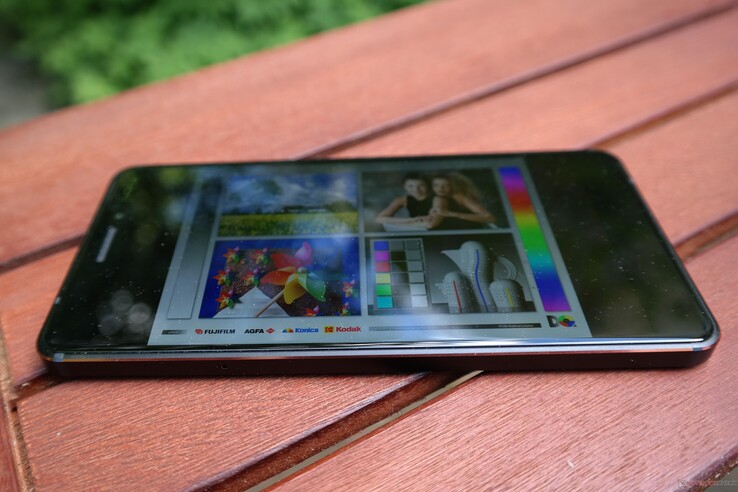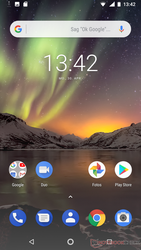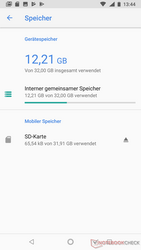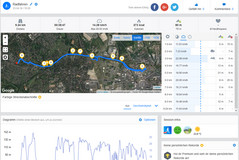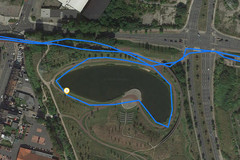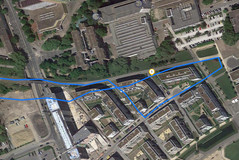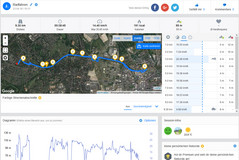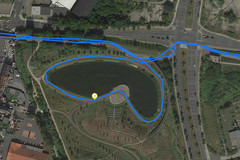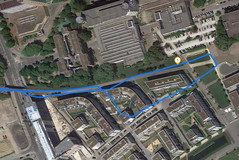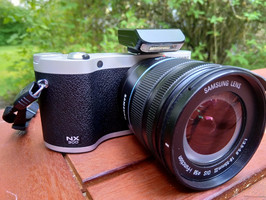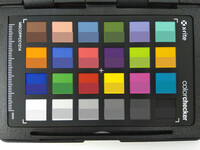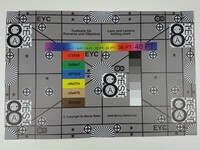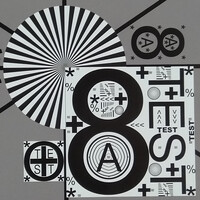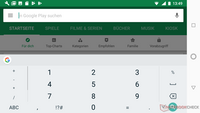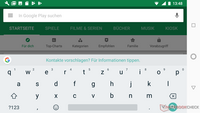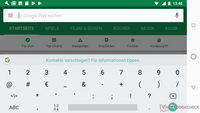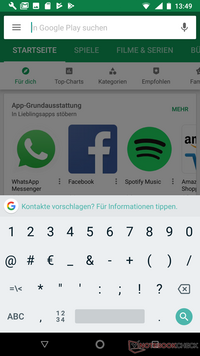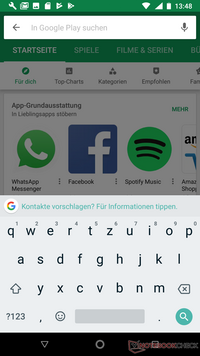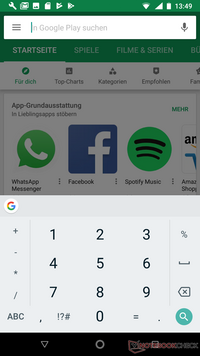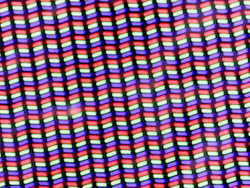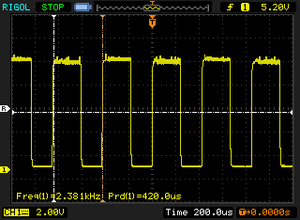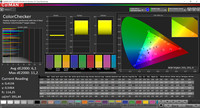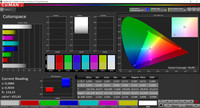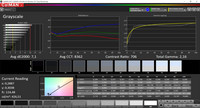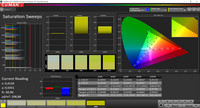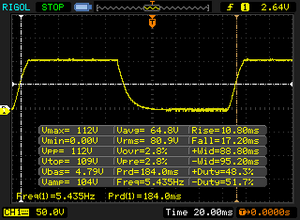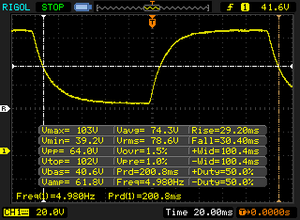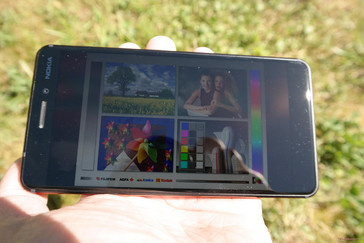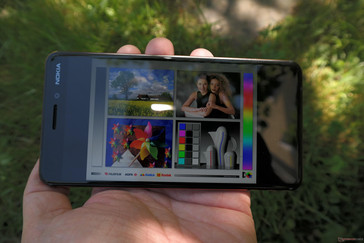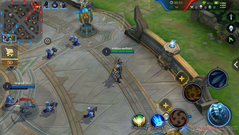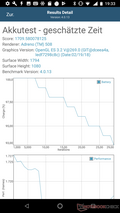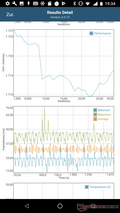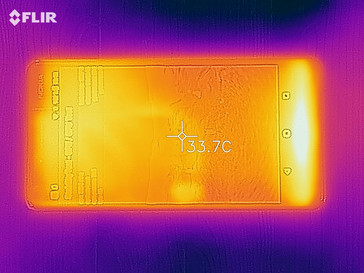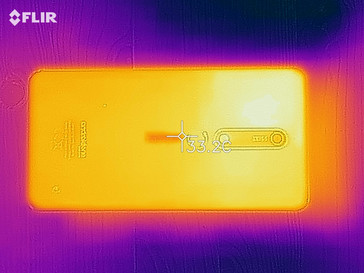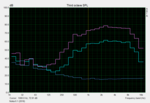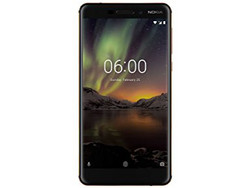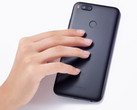Nokia 6 (2018) Smartphone Review

The fact that the Nokia 6 still has the same name as its predecessor does not mean that everything has remained the same. Today we are looking at a new device with better components.
The Nokia 6 2018 has a 5.5-inch IPS display in the 16:9 format and a mid-range SoC, which we are already familiar with from the Sony Xperia XA2. The main camera on the back has a lens from Zeiss; the battery capacity is average at 3000 mAh, but similar to that of the competition. The 3 GB of RAM and 32 GB of internal storage are sufficient and can also be expanded further via a microSD card. So far, there are no visible changes from last year’s model. But on the inside, the manufacturer has made some changes and equipped the Nokia 6 with a Qualcomm Snapdragon 630 processor and an Adreno 508 GPU. These components offer a significant boost in performance compared to last year's model. You might be pleased to hear that the Nokia 6 is again equipped with Stock Android - this time in the current version 8.1 Oreo. No unnecessary software is installed.
The same processor with a similar configuration can be found in the Sony Xperia XA2, the HTC U11 Life and the Google Pixel 2 XL. We have therefore chosen these devices as our comparison devices for the review of the Nokia 6.
Case - larger than the Nokia 8
The case of the Nokia 6 is defined by the 5.5-inch display and narrow bezels on two sides. Nokia seems to have decided not to follow the trend towards bezel-free screens; on the contrary, while the predecessor still had a fingerprint reader placed along the bottom edge, we are now presented with a black stripe that is basically useless. The Nokia is 8.2 mm (~0.3 in) high. The camera stands out of the aluminum case, which is why the smartphone does not lie flat on a hard surface.
The 6 has very good workmanship: The gap dimensions are narrow and even and the card slot is flush with the rest of the case. The hardware buttons for volume and turning the device on and off have a clear pressure point and sit tight. Our attempts at warping the device do not cause any noises and the device is as stable as its predecessor was. Like its predecessor, the device appears to be a high-quality smartphone.
The battery of the Nokia 6 cannot be removed by the user. The card slot is a hybrid version, which means that you can either insert two Nano-SIM cards or one SIM and one microSD card. The front of the device is protected by Gorilla glass; the back does not show too many fingerprints. The Nokia 6 is the heaviest device of our comparison field and weighs 175 g (~6.2 oz).
Connectivity - upper mid-range
The Nokia 6 is equipped with a USB Type-C port, although this only supports USB 2.0 speeds.
According to the manufacturer, the microSD card slot supports SD cards of up to 128 GB, which corresponds to the SDXC standard. Therefore, the smartphone should have no difficulties working with large cards. However, it is not possible to configure the microSD card as internal storage, which means that you cannot move apps onto the card.
The device also supports Wi-Fi 802.11 ac and Bluetooth 5.0.
With 3 GB of RAM and 32 GB of storage, the Nokia 6 has a similar configuration to its comparison devices. The Nokia 6 is also available with 4 GB of RAM. The distribution of ports is pretty standard: The audio jack is positioned on top, the USB port and volume rocker on the right above the power button. The fingerprint reader has been moved to the back.
Software - Pure Android without bloatware
HMD Global, the company that currently has the rights to the Nokia name, has equipped the Nokia 6 with the current Android version 8.1 Oreo. Our test unit was distributed with Android 8.0, but the update to 8.1 was installed automatically during testing.
The user interface will be familiar to users of Nokia smartphones, as this is an Android One smartphone. This means that pure Android is installed, and the device is furnished with updates directly from Google. HMD has no more influence on it. Google has promised updates for two years.
There is no additional software, which is great news.
Communication and GPS - Well communicated!
The Wi-Fi reception is as expected with 300 MBit/s when sending and receiving. This result is similar to the device's competition - only the HTC U11 has slightly lower results. The cell phone reception is good. The smartphone offers LTE Cat 4 and can work with almost every network, although 4G availability depends on the region. The reception is decent and voice quality is very good. We were particularly impressed with the speakers when talking on speakerphone. Volume and sound quality are good enough to be used in loud surroundings.
According to HMD Global, the phone also supports VoLTE and Wi-Fi Calling. There seemed to be some issues with these features under Android 8.0, but the update to 8.1 should have dealt with these.
| Networking | |
| iperf3 transmit AX12 | |
| Nokia 6 2018 | |
| Motorola Moto X4 | |
| Sony Xperia XA2 | |
| HTC U11 Life | |
| iperf3 receive AX12 | |
| Motorola Moto X4 | |
| Sony Xperia XA2 | |
| Nokia 6 2018 | |
| HTC U11 Life | |
The GPS was not able to locate us indoors, but positioned us within three meters (~10 ft) quite quickly outside.
We took our test unit on a bike ride together with the Garmin Edge 500 (professional navigation system). The route the Nokia 6 measured was 60 meters (~200 ft) shorter than the Garmin Edge 500 result, because it occasionally located us beside the path. You can easily recognize the points of measurement from the uneven line. The Nokia GPS set these points a lot less often than the Garmin Edge 500 did, but when they were set, they were usually correct. The inaccuracies are mainly due to the lower amount of points.
Telephone and Call Quality - loud and clear
The Nokia uses Google's standard telephone app.
The call quality is decent: Our call partner was easy to understand and the included headset is not great, but it works. The microphone caught our voice well and suppressed most ambient noise. Speakerphone mode works well and we could hear our call partner clearly.
Cameras - no dual camera
The main camera on the back takes photos with 16 MP, which is the same resolution as its predecessor had. The lenses come from Zeiss. Again, Nokia has chosen to use Android's standard photo app. This is not necessarily a bad choice as the app is very tidy while still offering all necessary functions. The camera can be accessed directly by clicking the power button twice. Upward or downward swiping gestures can turn on pro settings. At the time of the Lumia, cameras were always an important aspect of Nokia phones and the expectations of fans of the brand are considerably high. We noticed that Nokia has decided to go against the current trend and give its phone a single lens instead of a dual, or even triple camera. This is not necessarily a disadvantage if the quality of the single camera is good enough - and the test photos confirm that the manufacturer has made the right choice. The camera can boast a high-detail image quality that produces good pictures. The light intensity is not as good as it is on comparison devices. The camera can also not avoid significant image noise and the competition is better at brightening the image (the Google Pixel for example). Colors are not as brilliant as they could be. Still, the Nokia 6's camera does a decent job and can keep up with its competition regarding overall image quality. The main camera also records sharp videos with many details, particularly in 4K resolution. The Nokia 6 can also record videos in time lapse or slow motion. The latter can only be recorded in very low resolution, however. The front camera has a resolution of 8.3 MP and takes respectable photos that could be a little sharper. This lens can "only" record videos in Full-HD resolution.
We took a look at the image quality under controlled lighting. A photo of the ColorChecker passport shows that colors are quite bright and strong. The grayscales are a little warmer and white appears over-exposed.
We also noticed that blue tones are not quite accurate. We cannot complain about image sharpness: The photo of our test chart is very sharp. There is only a vague hint of image noise in the background. The usual drop in sharpness towards the edges is basically nonexistent. However, we did notice a sharp drop in contrast in the bottom corners.
Accessories and Warranty - buy separately
The scope of delivery includes a charging cable and power supply, as well as the usual obligatory information and user's manual in several languages. You can purchase suitable cases and screen protectors from various sellers. We were not impressed by the included headset, as the shape of the earbuds appears to be made for elephants rather than for humans and just will not sit nicely in our ears. Nokia has included a 24-month warranty for this device. Please see our Guarantees, Return policies and Warranties FAQ for country-specific information.
Input Devices & Handling - precise and reliable
The Nokia 6 is operated via its capacitive touchscreen, which recognizes up to 10 inputs at the same time. The screen is very reliable and precise during our test. Fingers glide over it easily and the response time is great. Our test with Gismart's Real Piano did not show any time lag when hitting the keys.
The keyboard app is Google's GBoard. If you prefer another keyboard app, you can download and install this from the Google Play store.
The physical buttons on the side appear to be of high quality and sit tight in the case. The pressure point is good too. Clicking the power button twice starts the camera app.
The fingerprint reader on the back of the phone is placed below the camera and is reliable and fast, if you place your finger on it properly.
When you lift up the smartphone, it shows the time on the lock screen. Tapping the screen twice also activates the time display. Additionally, you then need to swipe the screen to unlock the phone.
Display - not the brightest
The IPS FullView display of the Nokia 6 has a resolution of 1920 x 1080 pixels and a format of 16:9. Content is displayed sharply on the 5.5-inch panel and our measurements are good. However, the Nokia 6 is not the brightest smartphone of its price range. It is sufficiently bright with an average of 421 cd/m², but the contrast ratio is rather weak (684:1) due to the average black value of 0.61 cd/m². The brightness distribution is very uniform. Due to low reflectiveness, the screen is usually easy to read.
| |||||||||||||||||||||||||
Brightness Distribution: 88 %
Center on Battery: 417 cd/m²
Contrast: 684:1 (Black: 0.61 cd/m²)
ΔE ColorChecker Calman: 6.1 | ∀{0.5-29.43 Ø4.77}
ΔE Greyscale Calman: 7.1 | ∀{0.09-98 Ø5}
99.4% sRGB (Calman 2D)
Gamma: 2.16
CCT: 8362 K
| Nokia 6 2018 IPS, 1920x1080, 5.5" | Sony Xperia XA2 IPS, 1920x1080, 5.2" | Motorola Moto X4 LTPS IPS, 1920x1080, 5.2" | HTC U11 Life SLCD, 1920x1080, 5.2" | |
|---|---|---|---|---|
| Screen | 21% | 21% | 31% | |
| Brightness middle (cd/m²) | 417 | 513 23% | 469 12% | 545 31% |
| Brightness (cd/m²) | 421 | 506 20% | 479 14% | 526 25% |
| Brightness Distribution (%) | 88 | 93 6% | 86 -2% | 87 -1% |
| Black Level * (cd/m²) | 0.61 | 0.42 31% | 0.37 39% | 0.42 31% |
| Contrast (:1) | 684 | 1221 79% | 1268 85% | 1298 90% |
| Colorchecker dE 2000 * | 6.1 | 5 18% | 5.5 10% | 4.9 20% |
| Colorchecker dE 2000 max. * | 11.2 | 11.4 -2% | 10.7 4% | 8.5 24% |
| Greyscale dE 2000 * | 7.1 | 7.8 -10% | 6.7 6% | 5.4 24% |
| Gamma | 2.16 102% | 2.2 100% | 2.1 105% | 2.31 95% |
| CCT | 8362 78% | 7964 82% | 8064 81% | 7610 85% |
* ... smaller is better
Screen Flickering / PWM (Pulse-Width Modulation)
| Screen flickering / PWM detected | 2381 Hz | ≤ 17 % brightness setting | |
The display backlight flickers at 2381 Hz (worst case, e.g., utilizing PWM) Flickering detected at a brightness setting of 17 % and below. There should be no flickering or PWM above this brightness setting. The frequency of 2381 Hz is quite high, so most users sensitive to PWM should not notice any flickering. In comparison: 53 % of all tested devices do not use PWM to dim the display. If PWM was detected, an average of 8081 (minimum: 5 - maximum: 343500) Hz was measured. | |||
Display Response Times
| ↔ Response Time Black to White | ||
|---|---|---|
| 28 ms ... rise ↗ and fall ↘ combined | ↗ 10.8 ms rise | |
| ↘ 17.2 ms fall | ||
| The screen shows relatively slow response rates in our tests and may be too slow for gamers. In comparison, all tested devices range from 0.1 (minimum) to 240 (maximum) ms. » 70 % of all devices are better. This means that the measured response time is worse than the average of all tested devices (20.2 ms). | ||
| ↔ Response Time 50% Grey to 80% Grey | ||
| 59.6 ms ... rise ↗ and fall ↘ combined | ↗ 29.2 ms rise | |
| ↘ 30.4 ms fall | ||
| The screen shows slow response rates in our tests and will be unsatisfactory for gamers. In comparison, all tested devices range from 0.165 (minimum) to 636 (maximum) ms. » 95 % of all devices are better. This means that the measured response time is worse than the average of all tested devices (31.6 ms). | ||
Performance - sufficient reserves for now
The Nokia 6 is powered by a Qualcomm Snapdragon 630, which is also used in our comparison devices. The octa-core SoC consists of Cortex A53 cores that are separated into two clusters. The slightly stronger cluster clocks at up to 2.2 GHz while the weaker one clocks at 1.84 GHz. Then there is the 3-GB LPDDR3 RAM and an Adreno 508 GPU.
The Qualcomm Snapdragon 630 is a rather powerful processor for this price range. The test unit is on the same level as our comparison devices, which makes it difficult to see significant differences. The prices are all around $300 as well.
The Nokia 6 can display almost all games smoothly at 30 fps with the help of its Adreno 508, two cores and a clock rate of up to 900 MHz.
| AnTuTu v6 - Total Score (sort by value) | |
| Nokia 6 2018 | |
| Sony Xperia XA2 | |
| Motorola Moto X4 | |
| HTC U11 Life | |
| Average Qualcomm Snapdragon 630 (44128 - 73617, n=12) | |
| AnTuTu v7 - Total Score (sort by value) | |
| Nokia 6 2018 | |
| Sony Xperia XA2 | |
| Average Qualcomm Snapdragon 630 (87300 - 90674, n=11) | |
| PCMark for Android | |
| Work performance score (sort by value) | |
| Nokia 6 2018 | |
| Sony Xperia XA2 | |
| Motorola Moto X4 | |
| HTC U11 Life | |
| Average Qualcomm Snapdragon 630 (4948 - 6264, n=13) | |
| Work 2.0 performance score (sort by value) | |
| Nokia 6 2018 | |
| Sony Xperia XA2 | |
| Motorola Moto X4 | |
| HTC U11 Life | |
| Average Qualcomm Snapdragon 630 (4636 - 5987, n=12) | |
| GFXBench (DX / GLBenchmark) 2.7 | |
| T-Rex Onscreen (sort by value) | |
| Nokia 6 2018 | |
| Sony Xperia XA2 | |
| Motorola Moto X4 | |
| HTC U11 Life | |
| Average Qualcomm Snapdragon 630 (25 - 31, n=13) | |
| Average of class Smartphone (12 - 166, n=153, last 2 years) | |
| 1920x1080 T-Rex Offscreen (sort by value) | |
| Nokia 6 2018 | |
| Sony Xperia XA2 | |
| Motorola Moto X4 | |
| HTC U11 Life | |
| Average Qualcomm Snapdragon 630 (29 - 30, n=13) | |
| Average of class Smartphone (22 - 954, n=153, last 2 years) | |
| GFXBench 3.0 | |
| on screen Manhattan Onscreen OGL (sort by value) | |
| Nokia 6 2018 | |
| Sony Xperia XA2 | |
| Motorola Moto X4 | |
| HTC U11 Life | |
| Average Qualcomm Snapdragon 630 (11 - 15, n=13) | |
| Average of class Smartphone (18 - 166, n=155, last 2 years) | |
| 1920x1080 1080p Manhattan Offscreen (sort by value) | |
| Nokia 6 2018 | |
| Sony Xperia XA2 | |
| Motorola Moto X4 | |
| HTC U11 Life | |
| Average Qualcomm Snapdragon 630 (13 - 14, n=13) | |
| Average of class Smartphone (12 - 606, n=154, last 2 years) | |
| GFXBench 3.1 | |
| on screen Manhattan ES 3.1 Onscreen (sort by value) | |
| Nokia 6 2018 | |
| Sony Xperia XA2 | |
| Motorola Moto X4 | |
| HTC U11 Life | |
| Average Qualcomm Snapdragon 630 (5.3 - 11, n=13) | |
| Average of class Smartphone (11 - 166, n=155, last 2 years) | |
| 1920x1080 Manhattan ES 3.1 Offscreen (sort by value) | |
| Nokia 6 2018 | |
| Sony Xperia XA2 | |
| Motorola Moto X4 | |
| HTC U11 Life | |
| Average Qualcomm Snapdragon 630 (5.2 - 10, n=13) | |
| Average of class Smartphone (8.4 - 413, n=154, last 2 years) | |
The browser performance feels very fast and its benchmarks are good too. However, the Nokia 6 still has difficulties standing out from the masses. The browser benchmarks, which we used the preinstalled Google Chrome 65 browser for, are normal for this price range. Only in the WebXPRT 2015 did the Nokia 6 fall behind slightly. Subjectively, surfing is very smooth and fast and even complex websites load quickly.
| JetStream 1.1 - Total Score | |
| Motorola Moto X4 (Chrome 63) | |
| HTC U11 Life (Chrome 63) | |
| Average Qualcomm Snapdragon 630 (27.4 - 30.8, n=12) | |
| Nokia 6 2018 (Browser: Chrome 65) | |
| Sony Xperia XA2 (Chrome 65.0.3325.109) | |
| Octane V2 - Total Score | |
| Average of class Smartphone (2228 - 126661, n=194, last 2 years) | |
| Motorola Moto X4 (Chrome 63) | |
| Nokia 6 2018 (Browser: Chrome 65) | |
| Average Qualcomm Snapdragon 630 (4398 - 5202, n=13) | |
| HTC U11 Life (Chrome 63) | |
| Sony Xperia XA2 (Chrome 65.0.3325.109) | |
| Mozilla Kraken 1.1 - Total | |
| Sony Xperia XA2 (Chrome 65.0.3325.109) | |
| Nokia 6 2018 (Browser: Chrome 65) | |
| Average Qualcomm Snapdragon 630 (8396 - 10257, n=13) | |
| HTC U11 Life (Chrome 63) | |
| Motorola Moto X4 (Chrome 63) | |
| Average of class Smartphone (257 - 28190, n=154, last 2 years) | |
| WebXPRT 2015 - Overall | |
| Nokia 6 2018 | |
| Sony Xperia XA2 (Chrome 65.0.3325.109) | |
| Average Qualcomm Snapdragon 630 (86 - 117, n=10) | |
| HTC U11 Life (Chrome 63) | |
| Motorola Moto X4 (Chrome 63) | |
* ... smaller is better
The Nokia 6 has a 32-GB eMMC flash storage of which about 20 GB are available for use after the initial setup. The benchmark results are above-average, but still marks the tail end of the field.
The card reader has fast read and write rates with our reference microSD card - a Toshiba Exceria Pro M501 - but does not reach the card's maximum transfer rates. Compared to the other devices in this segment, the Nokia has achieved above-average results. Among our comparison devices, only the Sony Xperia XA2 manages slightly better results.
| Nokia 6 2018 | Sony Xperia XA2 | Motorola Moto X4 | HTC U11 Life | Average 32 GB eMMC Flash | Average of class Smartphone | |
|---|---|---|---|---|---|---|
| AndroBench 3-5 | 3% | 47% | 38% | 1% | 1253% | |
| Sequential Read 256KB (MB/s) | 272.6 | 271.5 0% | 281.6 3% | 268 -2% | 242 ? -11% | 2235 ? 720% |
| Sequential Write 256KB (MB/s) | 118.3 | 127.4 8% | 120.5 2% | 120 1% | 100.5 ? -15% | 1871 ? 1482% |
| Random Read 4KB (MB/s) | 38.78 | 43.07 11% | 45.4 17% | 39.3 1% | 43.1 ? 11% | 297 ? 666% |
| Random Write 4KB (MB/s) | 15.3 | 13.82 -10% | 55.3 261% | 50.2 228% | 22.3 ? 46% | 343 ? 2142% |
| Sequential Read 256KB SDCard (MB/s) | 83.4 ? | 86 ? 3% | 83.9 ? 1% | 82.8 ? -1% | 71.8 ? -14% | |
| Sequential Write 256KB SDCard (MB/s) | 61.3 ? | 64.8 ? 6% | 60 ? -2% | 59.8 ? -2% | 52.9 ? -14% |
Games - perfect controls and frame management
The Adreno 508 GPU displays all games from the store smoothly. Many games can also easily be played at 60 fps. During "Shadow Fight 3", the device automatically switched to 30 fps at low settings while "Arena of Valor" always ran at 30 fps and we could not get it to increase to 60 fps. The car racing game "Beach Buggy Racing" showed that the accelerometer is very responsive as well.
| Shadow Fight 3 | |||
| Settings | Value | ||
| high | 59 fps | ||
| minimal | 29 fps | ||
| Arena of Valor | |||
| Settings | Value | ||
| min | 30 fps | ||
| high HD | 30 fps | ||
Emissions
Temperature - the Nokia 6 with Scandinavian coolness
The surface temperature of the Nokia 6 is very low. While idling, the device hardly heats up at all and even under load, it does not even feel warm in our hand. The maximum temperature under load is 35.4 °C (95.72 °F) towards the lower end of the device. While idling, temperatures remain at around 25 °C (77 °F). If Nokia continues improving its temperature management at this rate, the next version can be used as a cool pack.
However, it seems that this does not have a big influence on performance: In the GFXBench Manhattan battery test, we noticed a drop of the frame rate, but only within 1%, which can be considered normal fluctuations.
(+) The maximum temperature on the upper side is 35.4 °C / 96 F, compared to the average of 35.2 °C / 95 F, ranging from 21.9 to 247 °C for the class Smartphone.
(+) The bottom heats up to a maximum of 32 °C / 90 F, compared to the average of 34 °C / 93 F
(+) In idle usage, the average temperature for the upper side is 24.9 °C / 77 F, compared to the device average of 32.9 °C / 91 F.
Speaker - good and without bass
The single speaker of the Nokia 6 does a decent job. At medium volume, the medium and high frequencies are quite well balanced. The smartphone can become very loud at over 86 dB(A). The bass frequencies are not very present, as was to be expected. Compared with other devices in this segment, our test unit is positioned in the upper mid-range.
The Nokia 6 supports aptX for high-resolution audio transmission via Bluetooth. The audio jack also transmits sound clearly.
Nokia 6 2018 audio analysis
(+) | speakers can play relatively loud (87.2 dB)
Bass 100 - 315 Hz
(-) | nearly no bass - on average 29.6% lower than median
(±) | linearity of bass is average (7.2% delta to prev. frequency)
Mids 400 - 2000 Hz
(+) | balanced mids - only 4.4% away from median
(±) | linearity of mids is average (7% delta to prev. frequency)
Highs 2 - 16 kHz
(±) | higher highs - on average 6.9% higher than median
(+) | highs are linear (3.2% delta to prev. frequency)
Overall 100 - 16.000 Hz
(±) | linearity of overall sound is average (23.2% difference to median)
Compared to same class
» 52% of all tested devices in this class were better, 7% similar, 41% worse
» The best had a delta of 11%, average was 35%, worst was 134%
Compared to all devices tested
» 69% of all tested devices were better, 5% similar, 26% worse
» The best had a delta of 4%, average was 24%, worst was 134%
Sony Xperia XA2 audio analysis
(+) | speakers can play relatively loud (85.6 dB)
Bass 100 - 315 Hz
(-) | nearly no bass - on average 28% lower than median
(±) | linearity of bass is average (11% delta to prev. frequency)
Mids 400 - 2000 Hz
(±) | reduced mids - on average 5.5% lower than median
(+) | mids are linear (5.6% delta to prev. frequency)
Highs 2 - 16 kHz
(±) | higher highs - on average 7.6% higher than median
(+) | highs are linear (2.2% delta to prev. frequency)
Overall 100 - 16.000 Hz
(±) | linearity of overall sound is average (23.6% difference to median)
Compared to same class
» 53% of all tested devices in this class were better, 8% similar, 39% worse
» The best had a delta of 11%, average was 35%, worst was 134%
Compared to all devices tested
» 70% of all tested devices were better, 6% similar, 24% worse
» The best had a delta of 4%, average was 24%, worst was 134%
Battery Runtime - long, but not perfect
Power Consumption
The power consumption of the Nokia 6 is average compared to its competitors. The Sony Xperia XA2 is better by 8%. The Motorola X4 is 6%, the HTC U11 Life 12% below our test unit in this area. The smartphone has good consumption rates that are above average compared to all devices in this segment. The Nokia 6 is supposed to support QuickCharge. In our test, it was still not recharged fully after two hours.
| Off / Standby | |
| Idle | |
| Load |
|
Key:
min: | |
| Nokia 6 2018 3000 mAh | Sony Xperia XA2 3300 mAh | Motorola Moto X4 3000 mAh | HTC U11 Life 2600 mAh | Average Qualcomm Snapdragon 630 | Average of class Smartphone | |
|---|---|---|---|---|---|---|
| Power Consumption | 8% | -6% | -12% | -18% | -59% | |
| Idle Minimum * (Watt) | 0.67 | 0.39 42% | 0.65 3% | 0.63 6% | 0.732 ? -9% | 0.847 ? -26% |
| Idle Average * (Watt) | 1.76 | 1.61 9% | 1.51 14% | 2.1 -19% | 1.835 ? -4% | 1.446 ? 18% |
| Idle Maximum * (Watt) | 1.78 | 1.62 9% | 1.57 12% | 2.15 -21% | 2.16 ? -21% | 1.63 ? 8% |
| Load Average * (Watt) | 2.82 | 3.12 -11% | 3.88 -38% | 3.34 -18% | 3.81 ? -35% | 6.95 ? -146% |
| Load Maximum * (Watt) | 4.56 | 4.92 -8% | 5.47 -20% | 4.83 -6% | 5.62 ? -23% | 11.3 ? -148% |
* ... smaller is better
Battery Runtime
The battery runtimes confirm the good power consumption, but not in all areas. The Nokia does a good job during the load and Wi-Fi tests and manages to take first place among its comparison devices. During the read and video tests, things look rather different. Although it has very similar results to the HTC U11 Life in the idle test, that device's battery capacity is 14% lower. The Sony Xperia XA2 wins the comparison by 37%, due in part to its larger battery capacity (+10%). The competition also does better at our video test. Eleven hours of movie watching should be sufficient nonetheless.
| Nokia 6 2018 3000 mAh | Sony Xperia XA2 3300 mAh | Motorola Moto X4 3000 mAh | HTC U11 Life 2600 mAh | |
|---|---|---|---|---|
| Battery runtime | 7% | -15% | -5% | |
| Reader / Idle (h) | 30.6 | 41.7 36% | 27.5 -10% | 30.3 -1% |
| H.264 (h) | 11.3 | 12.8 13% | 11.5 2% | 13.3 18% |
| WiFi v1.3 (h) | 15.7 | 14.8 -6% | 11 -30% | 12.1 -23% |
| Load (h) | 6 | 5 -17% | 4.8 -20% | 5.1 -15% |
Pros
Cons
Verdict - a great smartphone
The newest offspring of the Nokia 6 series offers an interesting package, but the strong competition in this price range give it a hard time. The 5.5-inch model with the 16:9 panel does not really have a unique selling point. At least one of the comparison devices also features a hybrid SIM slot, 3 GB of RAM and 32 GB of storage. Nokia has also decided to go against the current trend to dual cameras, which could be a disadvantage for buyers for whom technical specifications are important, although a closer look at the photos taken with the camera shows that the quality of the camera is just as good as that of dual cameras. Purists might appreciate the completely untouched Android operating system and the fact that there is no unnecessary software installed on the phone. The security updates are installed directly by Google thanks to Android One and we can expect further system updates.
Elegance, high performance, an all-round success ... in other words: A real Nokia.
The Nokia 6 offers an excellent package: It has a fast SoC that can keep up with all our current requirements for a smartphone, a good-looking exterior, low temperatures and a good configuration at an attractive price. We experienced no weaknesses during our test and can definitely recommend it considering its price of $290.
Nokia 6 2018
- 05/15/2018 v6 (old)
Florian Schaar


